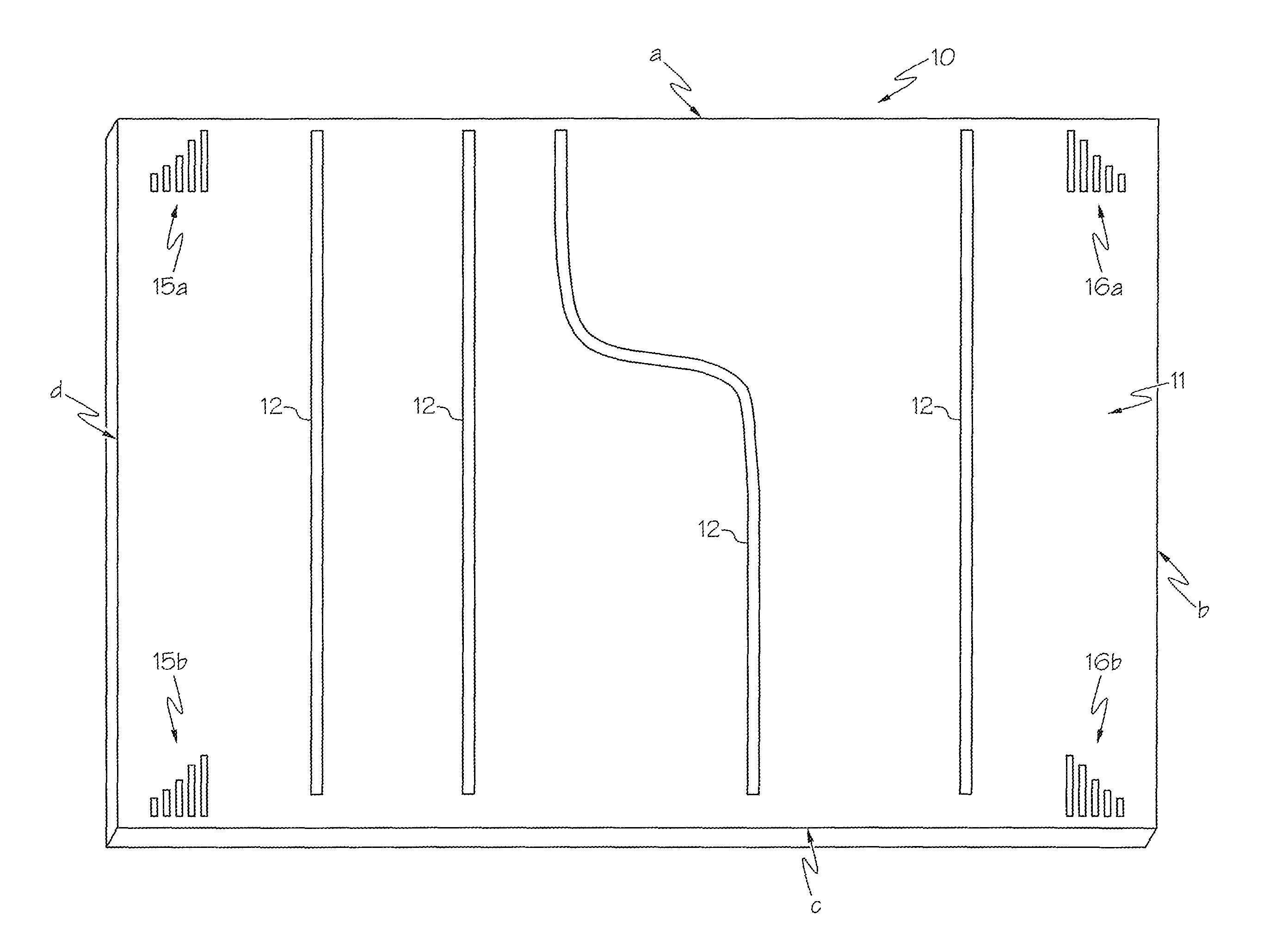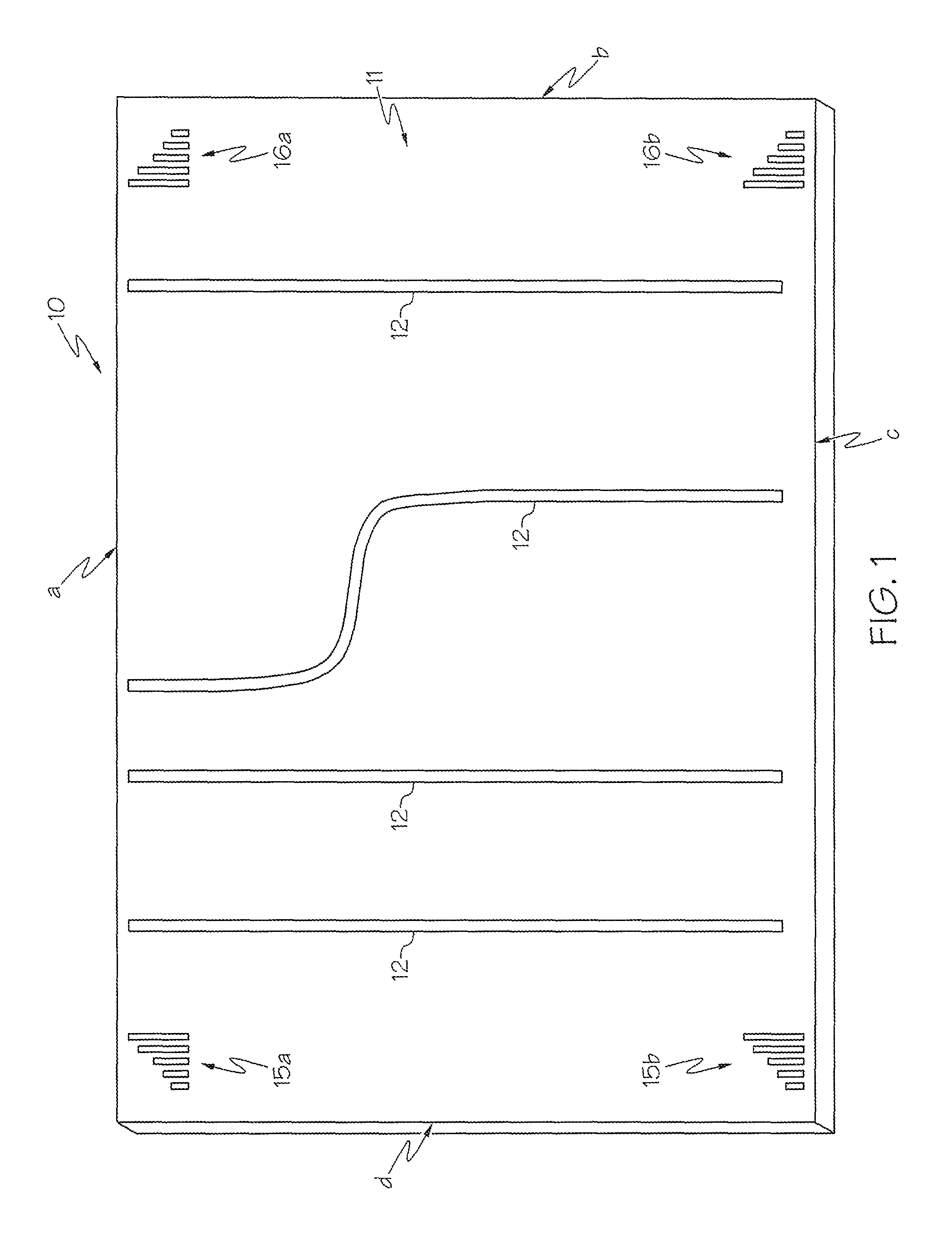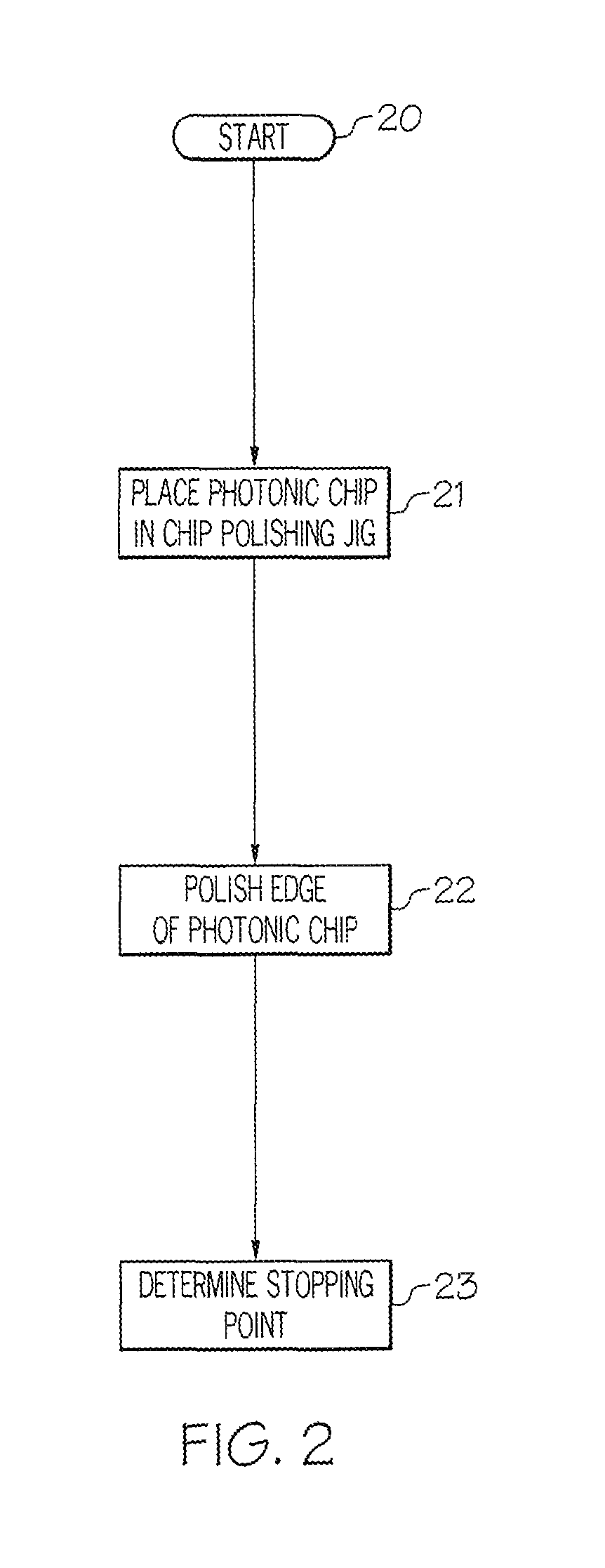Method for polishing photonic chips
a technology of photonic chips and polishing methods, which is applied in the field of photonic chips, can solve the problems of allowing the top edges of the photonic chips to be seen by an operator, rough edges that are not ideal for optical transmission, and rough edges that are not ideal for silicon wafers. to achieve the effect of stopping the polishing of the photonic chips
- Summary
- Abstract
- Description
- Claims
- Application Information
AI Technical Summary
Benefits of technology
Problems solved by technology
Method used
Image
Examples
Embodiment Construction
[0016]During edge polishing of a photonic chip, it is important not to polish too deeply into the photonic chip or the waveguides included within. Thus, as a preferred embodiment of the present invention, at least one gauge is placed within a photonic chip in order to assist an operator to determine the progress of an edge polishing process via visual inspection.
[0017]Referring now to the drawings and in particular to FIG. 1, there is illustrated an isometric view of a photonic chip in which a preferred embodiment of the present invention can be incorporated. As shown, a photonic chip 10 includes a top surface 11 and four edges (side surfaces) a-d. Photonic chip 10 can be of any size, and the length and width of top surface 11 preferably defines the size of photonic chip 10, while the depths of edges a-d are substantially smaller than the length or width of photonic chip 10. Multiple waveguides 12 are located within photonic chip 10 underneath top surface 11. Waveguides 12 may be ma...
PUM
 Login to View More
Login to View More Abstract
Description
Claims
Application Information
 Login to View More
Login to View More - R&D
- Intellectual Property
- Life Sciences
- Materials
- Tech Scout
- Unparalleled Data Quality
- Higher Quality Content
- 60% Fewer Hallucinations
Browse by: Latest US Patents, China's latest patents, Technical Efficacy Thesaurus, Application Domain, Technology Topic, Popular Technical Reports.
© 2025 PatSnap. All rights reserved.Legal|Privacy policy|Modern Slavery Act Transparency Statement|Sitemap|About US| Contact US: help@patsnap.com



